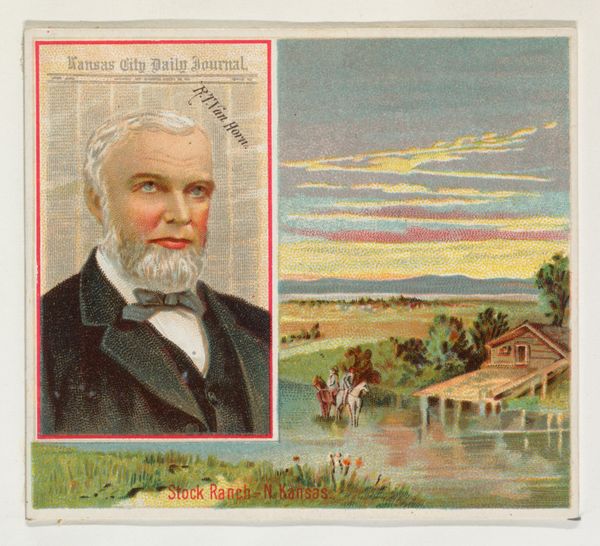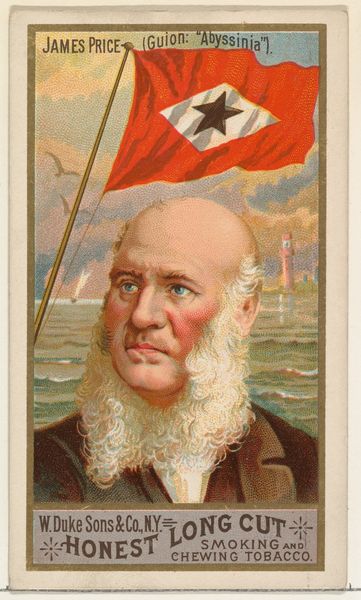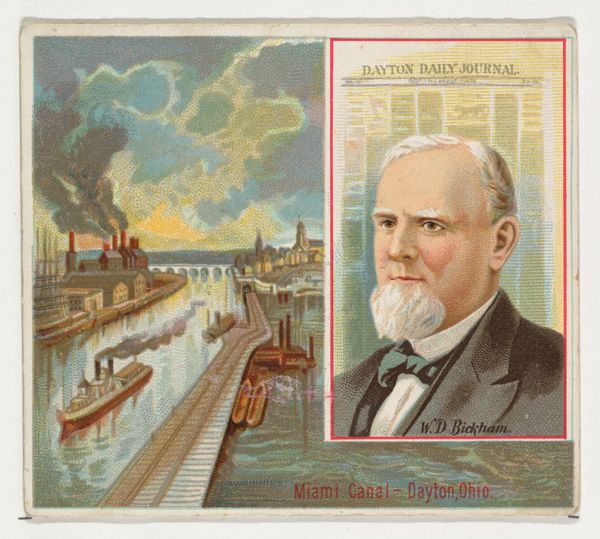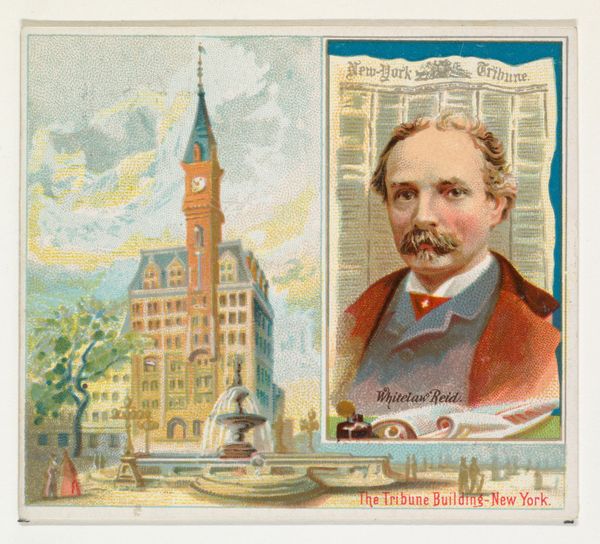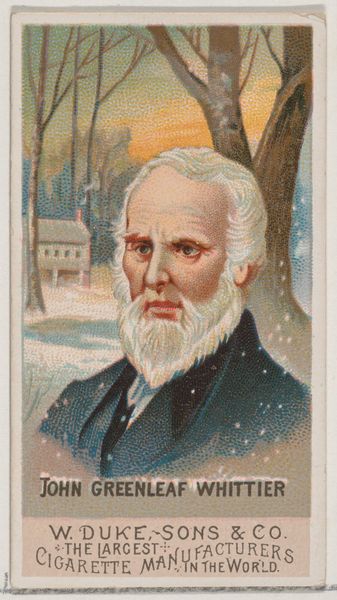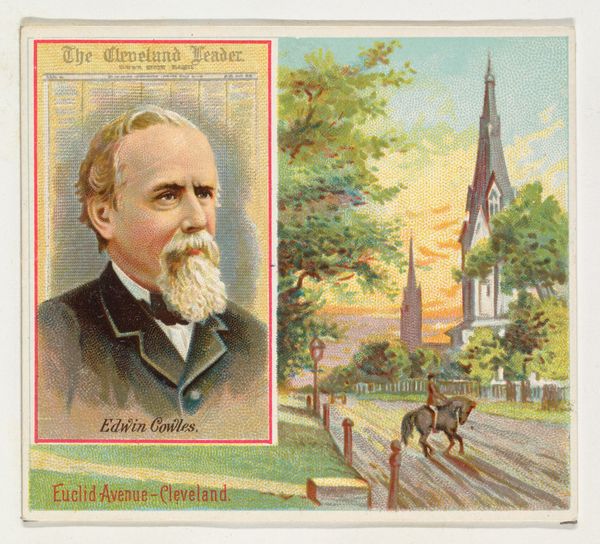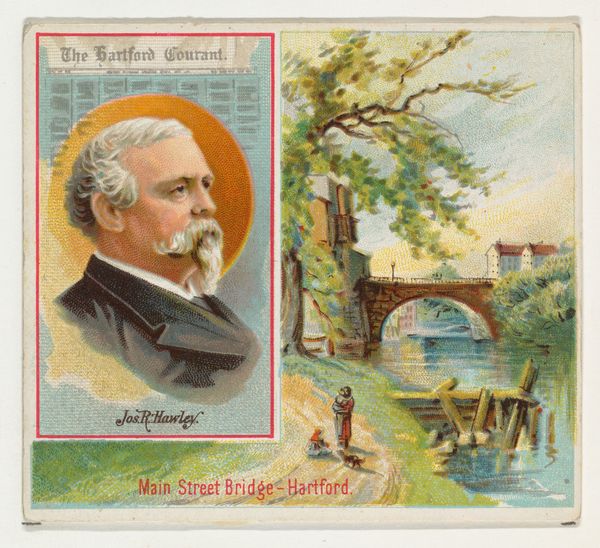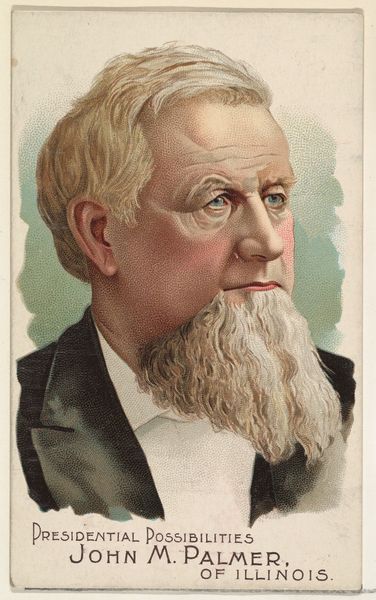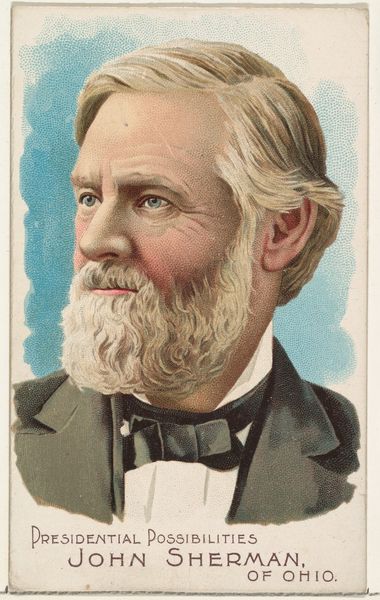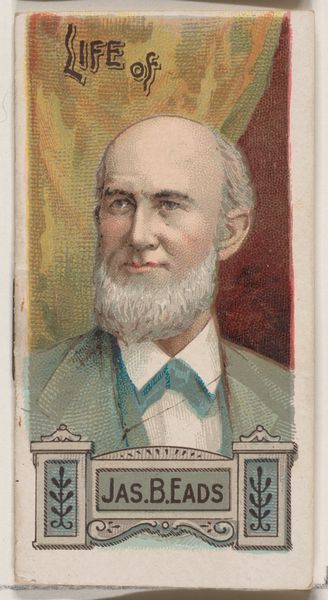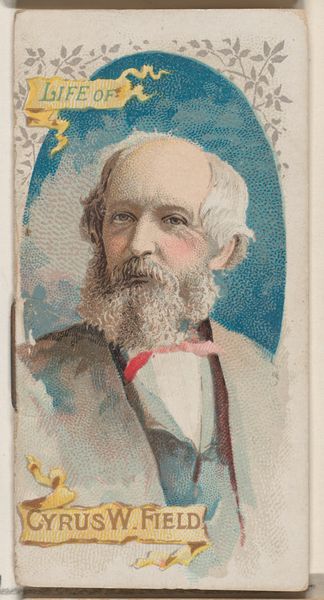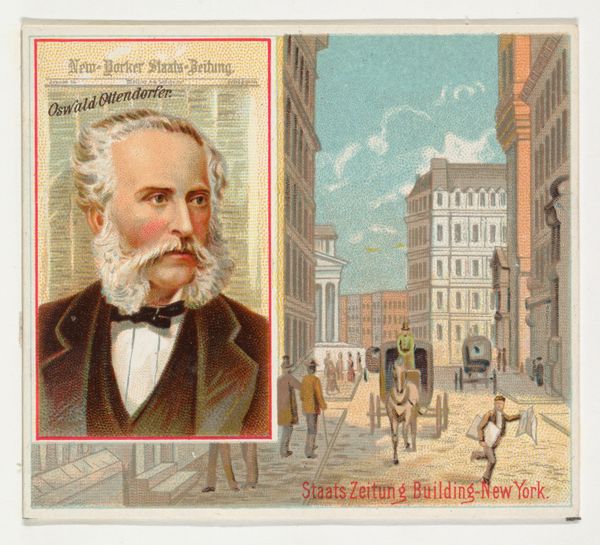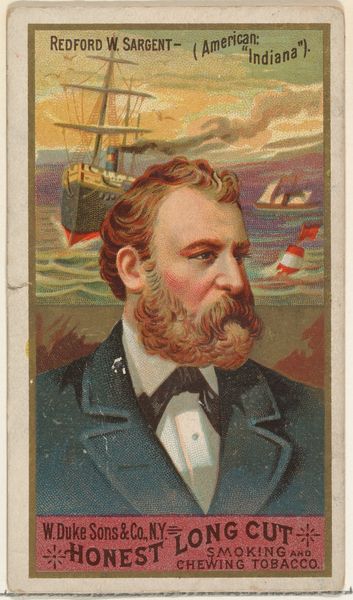
George R. Jones, The New York Times, from the American Editors series (N35) for Allen & Ginter Cigarettes 1887
0:00
0:00
drawing, print
#
portrait
#
drawing
#
art-nouveau
# print
#
caricature
#
cityscape
#
watercolor
Dimensions: Sheet: 2 7/8 x 3 1/4 in. (7.3 x 8.3 cm)
Copyright: Public Domain
Curator: This chromolithograph comes to us from 1887. Part of Allen & Ginter's "American Editors" series, it depicts George R. Jones, one of the founders of The New York Times. Editor: The division of the card is striking. The Times’ founder sits in a panel recalling his newspaper, and beside him the rising Statue of Liberty. It’s an interesting juxtaposition—almost a study in contrasts, East Coast establishment meeting Enlightenment ideal. Curator: The Statue is quite evocative here. Its placement next to Jones, a man who helped shape American media, suggests the newspaper's role in upholding the values the Statue embodies. Freedom, progress… Editor: I agree. And yet, placing Jones within that frame also implicitly acknowledges the Times' power. Who gets to interpret these ideals? Whose voices are amplified, and whose are silenced? The positioning seems celebratory but feels ripe for critique given later reporting about racial and gender biases at the paper. Curator: Ah, yes. It’s fascinating to see the Statue of Liberty paired with an image of the newspaper given the shifting ideals over the paper’s history, as it took root in America’s consciousness and how its function morphed with the country’s sense of self. Editor: It makes one wonder what narratives the editors chose to prioritize. Look at the composition, how Liberty is set against the romanticized vision of American skyline, while Jones is placed in front of newsprint. It gives precedence to the man himself. Curator: Yes, Jones’s face and clothing are sharply depicted compared to the slightly hazy evocation of Lady Liberty. Perhaps the image tries to suggest the paper's success is tied to the success of the man—a way of honoring him, equating him to one of the country's great accomplishments. It's about legacies, but what would he make of its digital reach today, the new responsibility of media? Editor: Exactly. This piece, even as a seemingly simple commercial card, captures so much about the construction of national identity, both then and now. Food for thought, indeed. Curator: Indeed. A perfect example of how images can carry profound cultural meaning, well beyond their surface appearance.
Comments
No comments
Be the first to comment and join the conversation on the ultimate creative platform.
